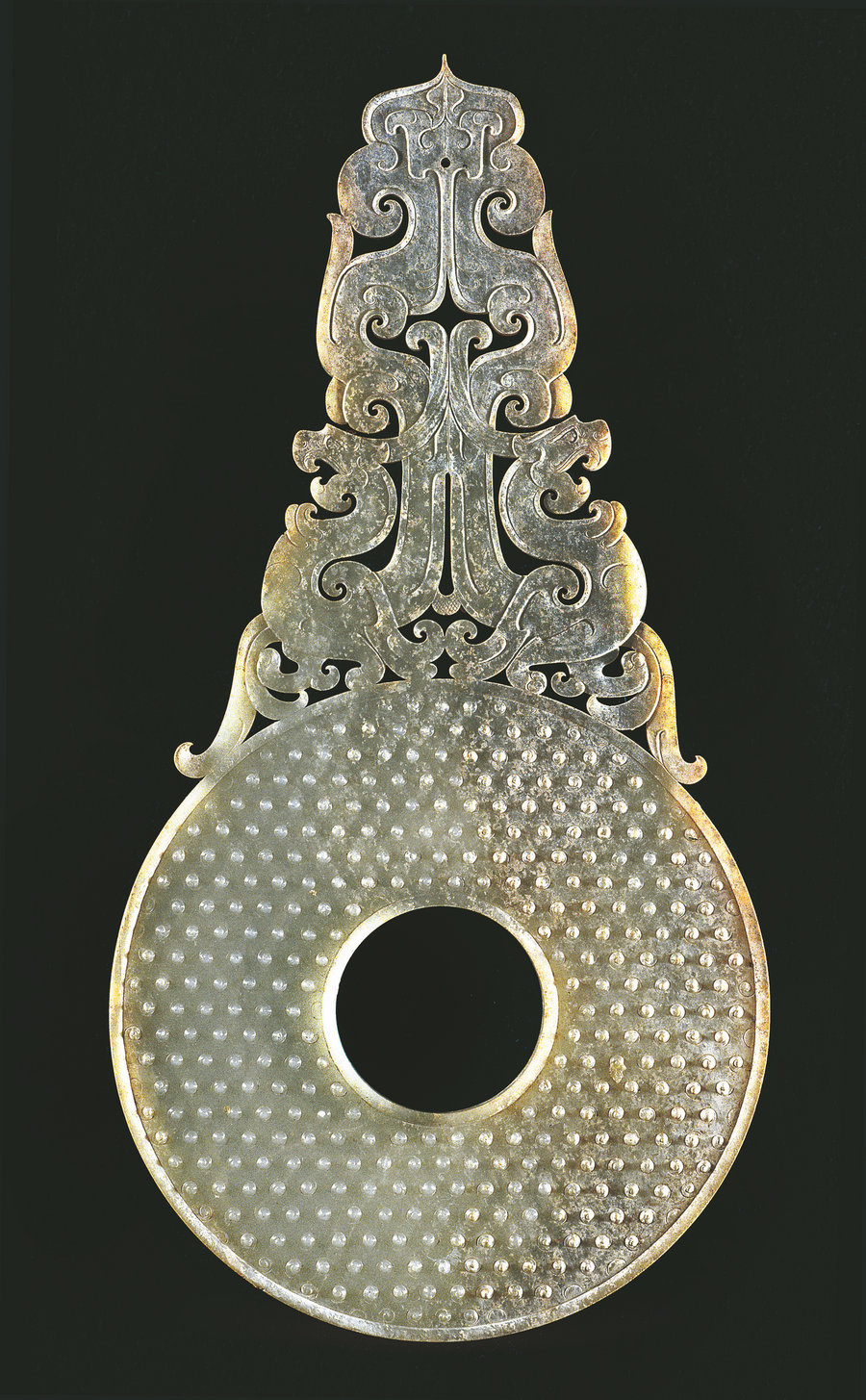

The exhibition includes a jade disc with a diameter of more than 25 centimeters made during the reign of Qing Dynasty (1644-1911) emperor Qianlong in the 18th century. The man, a die-hard jade lover who not surprisingly considered himself a guardian of China's artistic heritage, was known for commissioning a lot of jade wares based on antiquarian designs.
In the Western Zhou period, the social progress signaled by jade's substitution of human sacrifice was expedited toward its end, in 771 BC. What followed was the Eastern Zhou Dynasty (770-256 BC), in which Zhou rulers' authority over various vassal states gradually diminished. While the stronger among them, in fulfilling their own ambitions, pulled themselves away from the political center around which they once orbited, the weaker ones were left to fend for themselves.
Wars of conquest were fought — the state of Guo was vanquished by another vassal state in 658 BC — with increasing intensity and frequency, culminating in the Warring States Period (475-221 BC), which, in line with its name, was characterized by incessant military campaigns.
As is often the case, political instability provided a breeding ground for new ideas, from men who sought either to engage with changes in society at a philosophical level, or to explain the suffering and chaos they had witnessed. One such man was Confucius, who placed hope for a better world partly in the restoration of the rites and regulations Duke of Zhou had championed.